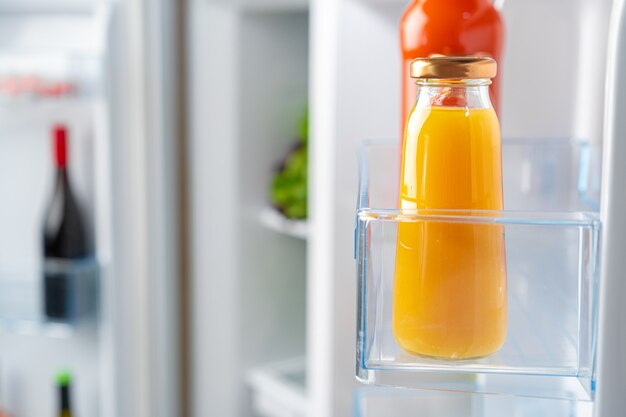How Long Does Your Homemade Soup Stay Fresh in the Fridge? 🍲
There's nothing quite like the comforting aroma of homemade soup simmering on the stove. Whether it's a hearty chicken noodle, velvety pumpkin, or a spicy tom yum, soup is a versatile dish that's both delicious and nutritious. But once you've spooned out your servings and placed the leftovers in the fridge, a common question arises: how long can your homemade soup actually last in the refrigerator?
Understanding the shelf life of homemade soup is crucial for both taste and safety. Spoiled soup can lead to foodborne illnesses, which are best avoided with proper storage practices. This guide will help you uncover the factors that affect your soup's longevity, as well as provide essential tips for storing it in a manner that preserves flavor and freshness.
Factors Affecting the Freshness of Homemade Soups
Ingredient Composition
One of the most significant factors influencing how long your soup will last in the fridge is the type of ingredients used. Soups with certain ingredients may not last as long as those with more stable components. Here are some key considerations:
- Animal Proteins: Soups containing meat, poultry, or seafood tend to have a shorter shelf life. These ingredients are more prone to bacterial growth and should be consumed within a few days.
- Dairy Products: Cream-based soups can spoil quicker than their broth-based counterparts. If your soup includes milk, cream, or cheese, aim to consume it more promptly.
- Vegetables: Some vegetables, like leafy greens, may degrade faster in soup form, while sturdier vegetables like carrots and potatoes can extend the duration.
Storage Conditions
How you store your soup plays a crucial role in determining its lifespan:
- Temperature: Your refrigerator should consistently maintain a temperature below 40°F (4°C). Higher temperatures can create a conducive environment for bacteria to thrive.
- Container: Use airtight containers to minimize exposure to air, which can lead to quicker spoilage. Glass or BPA-free plastic containers are ideal for soup storage.
- Headspace: Allow for some headspace in the container to accommodate any expansion during freezing, but eliminate excess air to preserve the soup’s quality.
Preparation Methods
The process of cooking and cooling your soup can also affect how long it lasts:
- Cooking to Proper Temperatures: Ensure that soup is cooked to a safe internal temperature to kill any potential bacteria.
- Cooling Down: Don’t let soup sit at room temperature for extended periods. Once it's ready, place it in shallow containers to speed up the cooling process before refrigerating.
How to Maximize Soup Freshness
Proper Cooling Techniques
When you’re finished cooking your soup, it’s crucial to cool it down quickly:
- Ice Bath: Place the soup pot in an ice bath to lower the temperature rapidly before transferring it to the fridge.
- Portioning Out: Dividing the soup into smaller portions in separate containers facilitates faster cooling.
Storing Methods
- Refrigerator: Consume within 3 to 4 days for most homemade soups, while more perishable varieties (like seafood or dairy-heavy soups) should be consumed within 1 to 2 days.
- Freezer: If you're not planning to consume the soup soon, freezing extends its life significantly. Soups can stay fresh for up to 2 to 3 months in the freezer when stored correctly.
Labeling Practices
Maintaining a clear labeling system ensures you keep track of how long your soups have been stored:
- Date Containers: Always label your containers with the date of preparation.
- Contents Notes: Mark any specific ingredients that may affect storage, especially if you’ve used any high-risk components like seafood or cream.
Signs Your Soup Has Gone Bad 🤢
Before diving into that next bowl of leftover soup, check for signs that it might be past its prime. Indicators of spoilage include:
- Off Odor: A sour or unpleasant smell is a surefire sign that the soup has spoiled.
- Texture Changes: Presence of unusual textures, such as mushiness or slime, particularly in proteins and vegetables.
- Mold: Any visible mold growth on the surface or sides of the container means it’s time to part ways with your soup.
Creative Ways to Use Up Leftover Soup
If your soup is nearing the end of its refrigerator life, consider these creative ideas to transform it into something new:
- As a Sauce Base: Thicken soup with a roux to use as a sauce over pasta or rice.
- In Casseroles: Incorporate into a casserole for added flavor and moisture.
- For Stews or Braises: Use leftover soup as a base for a hearty stew or braise.
Using soup in these versatile ways not only reduces waste but also adds flavor depth to other dishes.
A Handy Summary for Soup Storage
Here's a quick reference guide to maximize the freshness and safety of your homemade soups:
- 🍱 Meat-Based Soups: Last 3-4 days in the fridge.
- 🥛 Dairy-Heavy Soups: Best consumed within 1-2 days.
- 🥕 Vegetable Soups: Can stretch to 4 days, depending on ingredients.
- ❄️ Freezer Storage: Up to 2-3 months for most soups.
- 🔍 Check for Spoilage: Look for off smells, unusual textures, or mold.
- 🌡️ Cool Quickly: Use ice baths and shallow containers for fast chilling.
By following these guidelines, you can ensure that your homemade soup remains delicious, fresh, and ready to be enjoyed anytime. With a bit of care, your cooking efforts will be rewarded with safe, tasty meals throughout the week—turning each bowl into a comforting, appetizing experience.
Remember, the key to enjoying soup safely lies in understanding its ingredients and taking proper storage measures. By implementing these practices, you can savor every last spoonful—long after the initial pot has cooled. Happy cooking and nourished eating! 🍲
